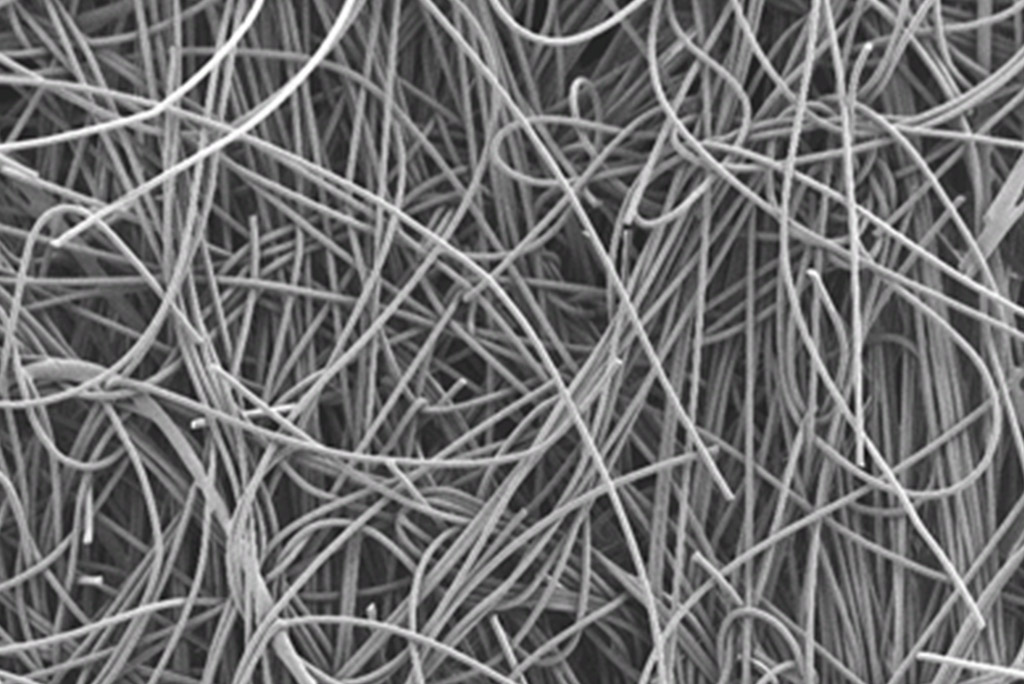Cleaning & Disinfection, Knowledge Base
I Can See Clearly Now Part III
Figure 1. Randomly dispersed ultra-fine polyester strands within a non-woven microfiber wiper.
In their pursuit of superior materials, textile scientists have been able to engineer a new type of nonwoven microfiber fabric. Traditional microfiber materials are comprised of very fine threads of polyester or polyester and nylon in which wedge-shaped strands are held within a central core incorporating an asterisk-shaped cross section. See Berkshire Technical Notes “I Can See Clearly Now” Parts I and Part II.
The new nonwoven microfiber fabric incorporates even finer microfiber strands of polyester that are randomly linked together (Figure 1) to provide good fabric strength, but without the core-wedge architecture referred to above. The thinner strands lead to an overall surface area increase of 450% as compared to standard polyester fabrics; this in turn leads to more effective removal of surface particles and residue films.
The simpler strand geometry produces wipers that have equivalent softness and particle removal capability as compared to conventional microfiber fabrics, but with much lower non-volatile residues when extracted with water or isopropyl alcohol. This makes the new nonwoven microfiber material the wiper of choice for cleaning lenses, optical assemblies, reflective surfaces and medical devices.
A new fabric such as this may also prove invaluable in “drag wiping” applications, in which a solvent-wetted wiper is dragged across a critical surface so that only the weight of the wiper contacts the surface. Surface contaminants are removed with the use of minimum downward force and are contained and trapped within the polyester strands. Visit our line of non-woven microfiber wipers.
Visit Part II
Visit Part I





















HAVE AN IDEA FOR CONTENT?
We are always looking for ideas and topics to write about.
Contact Us